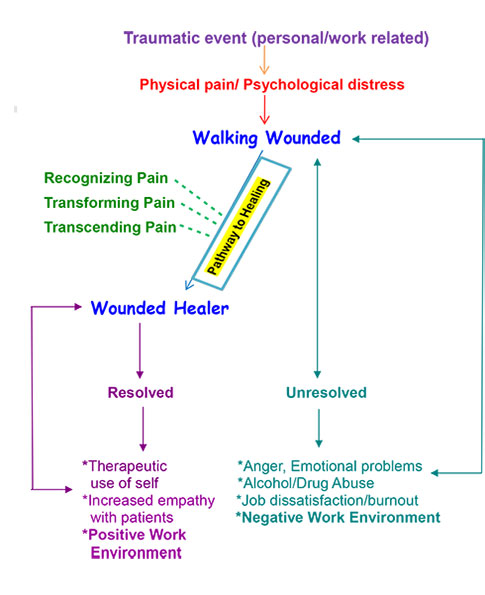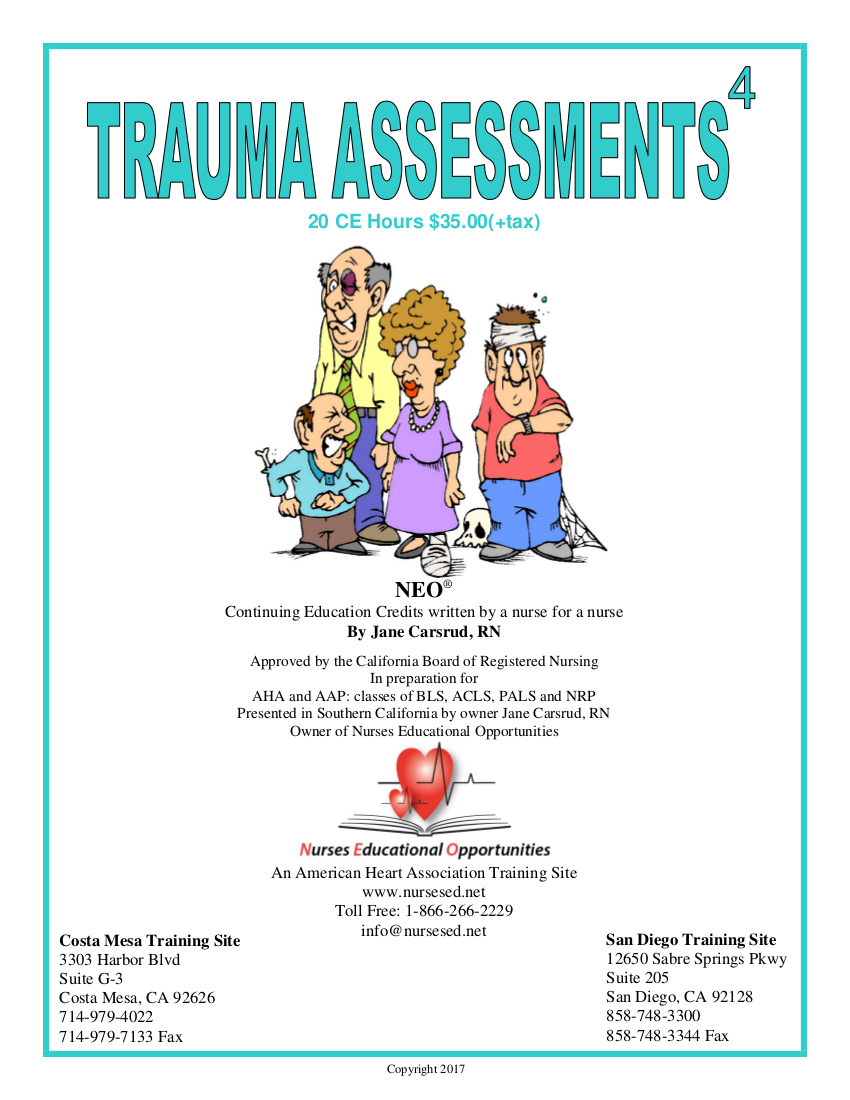
Nurses Eat their Young
Lateral violence is a form of nurse bullying
For instance, lateral violence occurs when another nurse deliberately instills harmful behavior in the workplace to another employee. Most noteworthy, nurse to nurse bullying remains extremely common in various hospitals and healthcare facilities. Nursing remains one of greatest occupations at risk for lateral violence. As a matter of fact, roughly 44% to 85% of nurses reported being victims of bullying (Christie and Jones, 2014).
Most notably, 93% of nurses reported witnessing lateral violence in the workplace. In most cases, the experienced nurse served as the perpetrator, whereas the New Grad and Student Nurse served the role of the victim (Jacobs & Kyzer, 2010). Due to it’s prevalence, most cases of lateral violence go under-reported. Astonishingly, many nurses have accepted this type of behavior, and considered it normal, but it is not!
It’s time to ask yourself if you will continue to be part of the high percentage of nurse victims and nurse bullies? We hope the answer is, NOT ANYMORE!
The nursing profession has consistently ranked #1 in honesty and ethical standards among professionals; which makes the rampant bulling an hazing that persists among nurses much more surprising.
The ongoing ubiquity of lateral violence has inspired the creation of the popular term “Nurses Eat their Young.” Coined in 1986, “Nurses Eat their Young” describes the hostility young nurses face at the hands of more experienced co-workers (Colduvell, 2017). Today, new graduates, including new hires still suffer from intense bullying in the workplace. You may be thinking, what causes a nurse to become a bully. Reasons as to why nurses become bullies include: Lack of autonomy, accountability, and control in the workplace (Colduvell, 2017)
Management may also contribute to the act of lateral violence
Roughly 56% of nurses, in 2014, suffered lateral violence at the hands of a manager or supervisor (Townsend, 2016). According to American Nurse Today, managerial bullying may result from; organizational instability due to downsizing, restructuring, high manager-turnover, and autocratic leadership styles; as well as, oppressed group behaviors; and last but not least, organizations that focus on productivity, plus financial outcomes rather than patient-centered care.
Furthermore, managers who bully, in many cases, learned by example. In the past, they themselves were victims or lateral violence and now serve in a position of power. In addition, Townsend, (2016), states that managers who bully tend to have low self-esteem or low clinical competence. Also, managerial bullies often target nurses who demonstrate competence; who remain well-liked by others; and nurses who have received special recognition. There are many reasons why co-workers, supervisors, as well as managers bully others, these are just a few reasons why.
Theory of the Nurse as a wounded healer

Created by Conti-O’Hare, the Theory of the Nurse as a Wounded Healer states that a nurse’s experience with lateral violence can either transform him or her into an advocate of bullying or a perpetrator of lateral violence. The result of lateral violence, most often pain and fear, can be carried throughout one’s life. The effects of bullying do not automatically resolve. All victims of lateral violence require some form of intervention. In fact, one’s ability or inability to cope with the trauma can profoundly affect one’s capability to care for others. Nurses should recognize their wounds in order to transform their pain and acquire transcendence. In a profession devoted to healing others, such as nursing, requires a nurse to heal him or herself first in order to thrive.
Pierre’s Story of lateral Violence
Nurses Educational Opportunities provides a RN Refresher course where nurses have shared their experiences with incivility in the workplace. Pierre, a young African-American man was one of several sharing his experience that cost him his license.
Pierre served as a doctor in Africa. When he migrated to the United States he chose to pursue a career in nursing and eventually achieved his nursing degree. As a new grad employee, Pierre became the target of verbal and indirect bullying, plus social isolation. A group of nurses banded together to sabotage Pierre by altering his documentation and reporting false accusations. Pierre felt powerless, being that he was a new grad, he felt he had inadequate support. Ultimately the bullying became so severe to the point where the group of nurses began to place stuffed toys of monkeys in his work-space. Pierre personal experience of lateral violence was aggressive, intentional and frequent.
Pierre reported his experienced to management to no avail. Management notoriously do not resolve the problem because they can’t or won’t! Since the entire staff was involved, the management couldn’t fire the entire staff. Ultimately nothing was done and Pierre was given the choice to deal with it or transfer to another hospital.
Stories like Pierre’s are so common that in 2015, the Professional Issues Panel on Incivility, Bullying, and Workplace Violence developed a new ANA position statement on this hot topic.
Key points of lateral violence by the American Nurses Association (ANA)
According to the ANA, the key points are as follows:
- The nursing profession will not tolerate violence of any kind from any source
- RN’s and employers must collaborate to create a culture of respect
- Evidence-based strategies that prevent and mitigate incivility, bullying, and workplace violence promote RN health, safety, and wellness and optimal outcomes in health care
- The strategies are listed and categorized by primary, secondary, and tertiary prevention
- The statement is relevant for all healthcare professionals and stakeholders
Subtle forms of bulling include: sabotage, withholding information, excluding others, unfair assignments, or downplaying accomplishments. This is referred to as incivility.
Even more, The Joint Commission, Division of Health Care Improvement, has condemned lateral violence by stating “bullying has no place in healthcare.” In addition, The Joint Commission released an advisory of safety and quality issues listing the following forms of abusive conduct. These include:
- Verbal abuse
- Threatening, intimidating or humiliating behaviors (including nonverbal)
- Work interference – sabotage – which prevents work from getting done
In addition, the five recognized categories of workplace violence include:
- Threat to professional status (public humiliation)
- Threat to personal standing (name calling, insults, teasing)
- Isolation (withholding information)
- Overwork (impossible deadlines)
- Destabilization (failing to give credit where credit is due)
Types of Lateral Violence
Overt lateral violence can include name calling, threatening body language, physical hazing, bickering, fault finding, negative criticism, intimidation, gossip, shouting, blaming, put down, raised eyebrow, rolling of the eyes, verbally abusive sarcasm, or physical acts such as pounding on a table, throwing objects or shoving a chair against a wall.
Covert lateral violence is initially more difficult to identity and includes unfair assignments, marginalizing a person, refusing to help someone, making faces behind someone’s back refusing to work with certain people, whining, sabotage, exclusion and fabrication.
The effects of nurse to nurse bullying
For one thing, lateral violence leads to depression, the inability to focus, anxiety, burnout, post-traumatic stress disorder and sleep disturbances. In addition, victims of bullying have higher rates of work absences, plus lower rates of productivity due to stress and distraction (Townsend, 2016). According to a 2013 study performed by Longo, older nurses suffer the greatest effects of bullying. Older nurses are susceptible to cardiovascular, gastrointestinal, and skeletal disorders, as well as chronic headaches.
Furthermore, victims are not the only ones to suffer the consequences of lateral violence. Alternatively, patients may feel the consequences through the lack of communication, teamwork, collaboration and leadership. According to the American Association of Critical-Care Nurses, unhealthy work environments contribute to increased hospital-acquired conditions and readmission’s. In addition, toxic environments promote the likelihood of errors, adverse patient outcomes and mortality. As a result, a hospital may end up with low patient satisfaction scores and decreased financial reimbursement.
Lateral violence is often viewed as a “rite of passage” that builds resilience
New grads often bypass this type of behavior by trying to build tough skin. However, does having “tough skin” protect the victim from their emotions within. Let’s explore what the new grad or returning nurse might do to avert lateral violence:
First, admit to yourself that you’re hurting and something is wrong. Many victims dismiss or minimize the event, or even blame themselves. Resist the temptation. If it feels bad, it is bad. And if you allow this behavior, that person is sure to repeat it, not because he or she a bad person, but because they doesn’t realize their behavior is wrong.
Here are five keys to responding appropriately to lateral violence in the workplace:
Manage your emotions.
Self-awareness is crucial in managing your emotions and your responses. First of all, take time-out and calm yourself. If you try to deal with the perpetrator while upset, you’re likely to behave unprofessionally.
Use empathy.
Try to find out where the person’s behavior is coming from to help you understand what’s triggering his/her bad behavior. Bad behavior reflect poor self-esteem and serves as a wall to keep others out. Bad behavior is learned behavior. Someone who behaves badly has learned this behavior brings some kind of reward such as power or attention. An appropriate response may be, “I’ve noticed you’ve been more impatient lately. Are you okay? Is there something going on I should know about?”
Assert your boundaries.
Asserting your boundaries tells others what behaviors are unacceptable. If you say nothing, your silence implies the behavior is acceptable. Rather, tell the person directly that her behavior is inappropriate, such as, “Please lower your voice.” “Did you realize you were yelling?”
Make direct request.
Tell the person directly how you want to be treated or how the two of you can work together. Try to establish a mutual goal for you both to work on. “Would you tell me how you would like me to do this procedure better rather than reporting me to the unit manager?” “In response, I will try to listen to you and do the procedure in a way that you like.”
Reach out to others.
Ask others for help. A mediator is someone who may be able to negotiate between to people. Choose a mediator that knows the perpetrator on a personal basis. The mediator will be able to address the situation with empathy and therefore, resolving a difficult situation without creating a war. Be careful, choose the right mediator that can accomplish resolution. The wrong mediator can create a war.
Methods to avert workplace bullying
Experienced nurses have demonstrated their concerns regarding difficulty communicating with new grads or transitional nurses. These are a few of their concerns:
Nurses report that new grads portray a sense of “all knowing.” This is particularly annoying for seasoned nurse who are trying to mentor the new grad.
In addition, nurses report that new grads portray a sense of “entitlement.” This is also particularly annoying for seasoned nurses who have earned their privileges.
Next, nurses report that new grads are “lackadaisical.” This is also particularly annoying for the seasoned nurse to mentor a new grad with no enthusiasm and puts forth a half-hearted effort.
Lastly, New grads, if you ask for help, be ready. If you’re asking for IV insertion help, have all equipment ready so that the mentor doesn’t have to do the leg-work of retrieving catheters, tubing, arm boards etc.
Here are some actions you can take if you are the victim of lateral violence.
It’s up to you to set your boundaries.
If you fail to do this, you create a situation cloaked in ambiguity. If a clear line isn’t drawn, you’ll never know when it’s crossed, which will cause you grief down the road. By setting a clear boundary and making what is clear to the aggressor, you are removing any possible vagueness that could seep into your interactions. You need to ask yourself “how far is too far?” as well as ask yourself “when exactly does this become bullying?” Parameters need to be identified first to fix any problem – the playing field needs to be clearly marked. If the rules are never clarified, how will anyone know whether the rules have been broken?
Document the events of lateral violence, before, during and after.
Start a documentation trail by keeping a small notebook with you and write down dates, times, witnesses, verbatim comments and behaviors that undermine a professional work environment. Keep growing this documentation trail until you are at the point where you can file a formal complaint.
When making your personal entries, always include your feelings that occur when bullied.
This is important because it reflects on the care of your patient. Admit to yourself that you’re hurting. Many victims dismiss or minimize the event, or even blame themselves. Resist that temptation. If you allow the behavior the “bully” is sure to repeat it because he/she doesn’t realize his/her behavior is wrong. Also, If abuse of any form is tolerated, it will continue. The negative workplace culture will significantly affect the health and well-being of both staff and patients.
Example of how to handle lateral violence in the workplace
You are ready to give the oncoming nurse your report. She announces that she has cared for this patient previously and states “just give me the highlights.” It is not your job to determine what the oncoming nurse knows or doesn’t know. Your job is to give a clear understanding of the patient’s reason for admission and an update of interventions. She may continue to state, “are you done yet?” Stop and think, how does that make you feel? Frustrated? Document that feeling.
Next time you have to report to her, you may be more ready to respond. “I need for you to listen to my report. It is not my job to determine what you know or don’t know. Therefore, before I leave this patient’s care to you I want to be assured you are aware of all interventions that occurred over my shift.” Say this calmly without raising your voice.
Next, He/she may respond with covert lateral responses such as staring at you without taking notes with arms crossed on her chest. Now how are you feeling? More frustrated? Now what will you do?
I know your blood is starting to “boil.”
Stop, take a breath, lean back in your chair and don’t say a thing. Just remain looking at your bully while you get your thoughts together. Then calmly lean forward and state “I find your reluctance to take a report from me frustrating. I will need to report your behavior to the unit manager.”
If she begins to apologize, that would be great but some apologies are insincere like a quick response of “sorry.” Does that resolved the incident? Not really. A real apology needs to be followed with “,,,, your right, I’ve acted badly. Please accept my apology. I will try to do better.”
10 effective ways to break the cycle of bullying.
- First, admit that a problem exists.
- Educate all staff on bullying behaviors to help develop an awareness of the problem and the implications of unchecked bullying. Address appropriate and inappropriate behaviors and policies.
- All team members must be held accountable for modeling professional behaviors; managers must be provided with skills-based training on communication, relationship building, and collaboration.
- Administrators must create an environment in which employees can safely report bullying and know that these issues will be addressed.
- Training in effective communication and conflict resolution skills are key.
- Clearly communicate what the behavioral expectations are; support bullies in efforts to change their toxic behaviors.
- Stop gossip in its tracks and address bullying behaviors directly without being accusatory or aggressive.
- Staff members must commit to creating a positive workplace culture, and vow to stop participating in negative and destructive behaviors.
- Foster a culture of respect.
- Support a zero-tolerance policy with respect to bullying; act on all instances of bullying.
It is up to every nurse to change workplace bullying
In conclusion, while the ANA provides vital resources on nurse bullying and workplace violence, it is up to individual nurses, nurses leaders, facilities, and units to take advantage of these resources. The ANA supports, encourages, and promotes nurses to take concerted action against bullying.
In some hospitals, educational sessions are offered for staff members in order to discuss incivility and bullying; for example, Kennedy Health System, located in central/southern New Jersey, is requiring all nurses to attend three relationship-based education classes. One two-hour session specifically discusses workplace violence, hostility, and bullying among nurses. These sessions help promote unity and effective communication among staff.
For now, if you feel alone, unheard or helpless we encourage you to seek help. Lastly, you may contact Nurses Educational Opportunities for additional resources on Lateral violence.
References
Colduvell, K. April 2017. Nurse Bullying: Stand Up And Speak Out. Retrieved from: https://nurse.org/articles/how-to-deal-with-nurse-bullying/
The Joint Commission, Division of Health Care Improvement. June 2016. Quick safety issues 24. Retrieved from: https://www.jointcommission.org/assets/1/23/Quick_Safety_Issue_24_June_2016.pdf
Townsend, T. February 2016. Not just “eating our young”: Workplace bullying strikes experienced nurses, too. Retrieved from: https://www.americannursetoday.com/just-eating-young-workplace-bullying-strikes-experienced-nurses/



